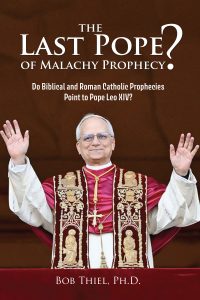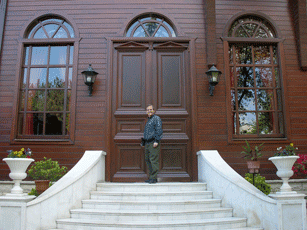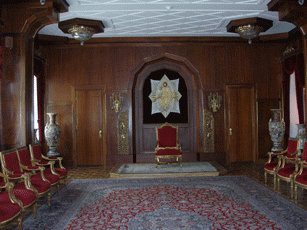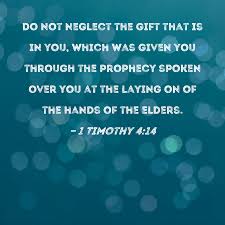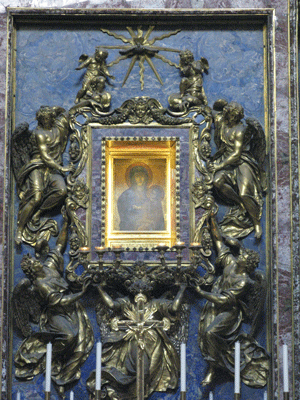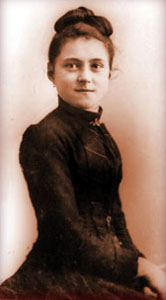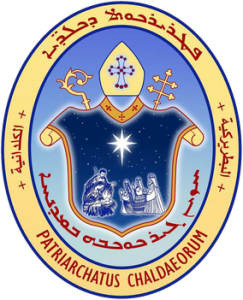Leaked document suggests that Pope Francis did not tell the truth about ‘Latin Mass,’ but many proponents of it seem not to understand it was NOT the original language of church services
Thursday, July 3rd, 2025NewsMax reported the following:
Leaked Vatican Docs Undermine Francis on Latin Mass
July 3, 2025
The debate in the Catholic Church over the celebration of the old Latin Mass is heating up just as Pope Leo XIV’s pontificate is getting under way, with the apparent leak of Vatican documents that undermine the stated reason of his predecessor Pope Francis for restricting access to the ancient liturgy.
The documents suggest that the majority of Catholic bishops who responded to a 2020 Vatican survey about the Latin Mass had expressed general satisfaction with it, and warned that restricting it would “do more harm than good.”
The texts from the Vatican’s doctrine office were posted online Tuesday by a Vatican reporter who has followed the Latin Mass dispute, Diane Montagna. …
In one of his most controversial acts, Francis in 2021 reversed Pope Benedict XVI’s signature liturgical legacy and restricted access for ordinary Catholics to the old Latin Mass. The ancient liturgy was celebrated around the world before the modernizing reforms of the 1960s Second Vatican Council, which allowed Mass to be celebrated in the vernacular, with the priest facing the pews.
Francis said he was cracking down on the spread of the old liturgy because Benedict’s decision in 2007 to relax restrictions had become a source of division in the church. Francis said at the time he was responding to “the wishes expressed” by bishops around the world who had responded to the Vatican survey, as well as the Vatican doctrine office’s own opinion.
“The responses reveal a situation that preoccupies and saddens me, and persuades me of the need to intervene,” Francis wrote at the time. Benedict’s relaxation had been “exploited to widen the gaps, reinforce the divergences, and encourage disagreements that injure the church, block her path, and expose her to the peril of division,” he said.
The documents posted online, however, paint a different picture. They suggest the majority of bishops who responded to the Vatican survey had a generally favorable view of Benedict’s reform and warned that suppressing or weakening it would lead traditionalist Catholics to leave the church and join schismatic groups. They warned any changes “would seriously damage the life of the church, as it would recreate the tensions that the document had helped to resolve.” https://www.newsmax.com/newsfront/vatican-leaked-documents/2025/07/03/id/1217446/
Notice also:
VATICAN CITY, July 1, 2025 — New evidence has come to light that exposes major cracks in the foundation of Traditionis Custodes, Pope Francis’ 2021 decree that restricted the traditional Roman liturgy.
This journalist has obtained the Vatican’s overall assessment of the consultation of bishops that was said to have “prompted” Pope Francis to revoke Summorum Pontificum, Benedict XVI’s 2007 apostolic letter liberalizing the vetus ordo, more commonly known as the “Traditional Latin Mass” and sacraments.
The previously undisclosed text, which forms a crucial part of the official report by the Congregation for the Doctrine of the Faith on its 2020 consultation of bishops concerning Summorum Pontificum, reveals that “the majority of bishops who responded to the questionnaire stated that making legislative changes to Summorum Pontificum would cause more harm than good.”
The overall assessment directly contradicts, therefore, the stated rationale for imposing Traditionis Custodes and raises serious questions about its credibility. https://dianemontagna.substack.com/p/exclusive-official-vatican-report
Pope Francis did upset some who call themselves traditionalists with his pronouncements related to the ‘Latin Mass.’
But he is not the only one who has not told the full truth about Latin Mass.
While some Roman Catholics believe that the original Christians held “mass’ in Latin, that is simply not true.
Notice the following that is in my free online book, Beliefs of the Original Catholic Church:
Latin Mass and Liturgic Changes
Despite the view of some Roman ‘traditionalists,’ the original church liturgy was not in Latin nor did it resemble Roman Catholic mass. Notice three Roman Catholic reports:
In the third and fourth centuries A.D. … Latin began to replace Greek as the common language of the Roman world and soon became the language of the liturgy. Exactly how this change in the liturgy came about is uncertain. … Because Christians had not used Latin for worship prior to this, words had to be adapted or imported (often from Greek) to express Christian ideas, beginning the development of an ecclesiastical form of Latin. There is also evidence that the Roman Canon was influenced by prayers from the Eastern churches. (Tufano VM. When did we start celebrating Mass in Latin? US Catholic, June 18, 2010)
The word Mass (missa) first established itself as the general designation for the Eucharistic Sacrifice in the West after the time of Pope Gregory the Great (d. 604), … Mass goes back in … a custom that takes us at once into the third century (Pohle J. Sacrifice of the Mass. The Catholic Encyclopedia)
Roman Mass … and the established customs became “ritualized” over the centuries. … As early as the fourth century, fixed liturgical rites can be found in the Church. (The Traditional Latin Mass: A Brief History. MyCatholicSource.com, accessed 09/22/20)
Some assert Latin Mass began to be used by the Roman Bishop Victor c. 190. But even if the early use of Latin in the late 2nd century is true (and using the common language of an area for church services makes sense), Latin still was not the original language of original church services—that was Aramaic/Hebrew. However, Greek quickly became used as the New Testament epistles—which were written in Greek—help demonstrate.
Not only were original church services not in Latin, according to The Catholic Encyclopedia, they were not called Mass until the 7th century. Furthermore, as many rituals in Latin Mass came from the 3rd and 4th centuries, those practices were not really a part of the regular original services.
Roman Catholic sources clearly teach that ritualized Latin Mass was a change from the original catholic liturgy. More changes occurred in the 13th through 15th centuries (Jedin H, ed. History of the Church, Volume 2. Crossroad, New York, 1993, p. 326).
The Eastern Orthodox, also, have freely admitted that their liturgy CHANGED. Notice this from one of their writers:
The liturgical practices of the church at Antioch did not stagnate. As does every early tradition of the church, the liturgy continued to expand in content and meaning. (Lucas J. Liturgical Pattern and Experience in First Century Antioch. By the Waters: Selected Works by Students of St. Tikhon’s Orthodox Theological Seminary, vol 7, Fall 2008, pp. 40-52)
The original church liturgy did not have much resemblance to Eastern Orthodox services, which begin and end with the “signing of the cross.” The teaching that the “liturgical practices of the church at Antioch did not stagnate” demonstrates that what ended up in Antioch changed—hence the Eastern Orthodox admit that what they now have is NOT the original catholic liturgy.
Some claim that they follow the “Divine Liturgy of St. James.” However, that was not original, nor did James come up with it as The Catholic Encyclopedia and the OrthodoxWiki also understand:
… the famous liturgy of St. James. That it was actually composed by St. James the Less, as first Bishop of Jerusalem, is not now believed by any one; (Fortescue A. Liturgy of Jerusalem. The Catholic Encyclopedia)
The general scholarly consensus is that this liturgy originated in Jerusalem during the late fourth or early fifth century. It quickly became the primary liturgy in Jerusalem and Antioch. Although it was later superseded in Jerusalem and Antioch by the Liturgy of St. Basil and the Liturgy of St. John Chrysostom, it had already spread to other areas of the Church. (Liturgy of St. James. OrthodoxWiki, accessed 06/04/21)
So, what the Eastern Orthodox now do was not original.
Unlike how Eastern Orthodox church service were conducted, there were no icons, incense, signing of the cross, or leavened bread as part of the original church services. Nor “chanting” sermons nor hymns sung to Mary. None of the known current Eastern Orthodox litanies (‘petitions’ recited by the clergy and responded to in a recurring formula by the people) were originally used by early Christians either.
The CCOG {Continuing Church of God} maintains it has continued the original catholic church practices when it comes to church services, or the liturgy.
So, no, Latin mass is not an original tradition of the catholic church–but a change in liturgy.
Now, what about praying to the East?
Some may wish to read the Bible, as it objects to this. Here are quotes from the New Jerusalem Bible, which is a Roman Catholic translation of the scriptures into the English language:
15 He said, ‘Son of man, do you see that? You will see even more loathsome things than that.’
16 He then led me to the inner court of the Temple of Yahweh. And there, at the entrance to Yahweh’s sanctuary, between the portico and the altar, there were about twenty-five men, with their backs to Yahweh’s sanctuary and their faces turned towards the east, before the rising sun. (Ezekiel 8:15-16)
So, although the Bible warns against worship towards the east and associates it with sun-god worship, the Church of Rome is encouraging this.
Why might the Church of Rome be encouraging something in conflict with the Bible here?
Well, sadly, many practices associated with sun-god worship, specifically Mithraism were adopted by the Church of Rome. Mithraism had priests pray towards the sun, which in the morning meant towards the east. Notice the following report from the Roman Catholic scholar F. Cumont (bolding mine):
The priest was the intermediary between God and man. His functions evidently included the administration of the sacraments and the celebration of the services. The inscriptions tell us that in addition he presided at the formal dedications, or at least represented the faithful one on such an occasion along with the Fathers; but this was the least portion only of the duties he had to perform; the religious service which fell to his lot appears to have been very exacting. He doubtless was compelled to see that a perpetual fire burned upon the altars. Three times a day, at dawn, at noon, and at dusk, he addressed a prayer to the Sun, turning in the morning toward the East, at noon toward the South, at evening toward the West. The daily liturgy frequently embraced special sacrifices.
…the orthodox and heretical liturgies of Christianity, which gradually sprang up during the first centuries of our era, could find abundant inspiration in the Mithraic Mysteries… it appears certain that the commemoration of the Nativity was set for the 25th of December, because it was at the winter solstice that the rebirth of the invincible god,* the Natalis invicti, was celebrated. In adopting this date, which was universally distinguished by sacred festivities, the ecclesiastical authority purified in some measure the profane usages which it could not suppress. The only domain in which we can ascertain in detail the extent to which Christianity imitated Mithraism is that of art. The Mithraic sculpture, which had been first developed, furnished the ancient Christian marble-cutters with a large number of models, which they adopted or adapted…(Cumont, pp. 166, 193,196-197).
Many of the doctrines and practices mentioned above were NOT held by the original Christians. For articles related to them, please see Do You Practice Mithraism?, Sunday and Christianity, What Does the Catholic Church Teach About Christmas and the Holy Days?, Did Early Christians Believe that Humans Possessed Immortality?, and What Did the Early Church Teach About Idols and Icons?
Even Wikipedia realizes that worship towards the east does not come from Christianity:
The practice of praying towards the East is older than Christianity (East. Wikipedia, accessed 07/06/16)
Eastern worship is condemned in the Continuing Church of God booklet Prayer: What Does the Bible Teach?:
Notice what Jesus Himself taught:
23 But the hour is coming, and now is, when the true worshipers will worship the Father in spirit and truth; for the Father is seeking such to worship Him. 24 God is Spirit, and those who worship Him must worship in spirit and truth. (John 4:23-24)
Many think that it does not matter what or how they worship, only that they make some attempt. That is not what Jesus said that the Father wants.
Jesus also taught:
8 “These people draw near to Me with their mouth, And honor Me with their lips, But their heart is far from Me. 9 And in vain they worship Me, Teaching as doctrines the commandments of men.” (Matthew 15:8-9)
People may pray out loud or silently, but notice that they can be worshiping God in vain if they are following the imaginations of their own mind or ‘traditions’ of human beings which are contrary to God’s ways. Intentionally praying to the east (Ezekiel 8:16) and certain holidays that many who claim Christianity observe, do not come from the Bible, but from compromises with pagan “traditions of men” (see also our booklet Should You Observe God’s Holy Days or Demonic Holidays?). …
While some have said that having icons around reminds them to pray, the Apostle John wrote:
21 Little children, keep yourselves from idols. Amen. (1 John 5:21).
He did not say that idols/icons should be around to encourage prayer. The pagans did that. And the Bible teaches that the true God does not want to be worshiped as other gods have been (Leviticus 18:24-30; Deuteronomy 12:29-31).
The Bible points to God’s throne being in the far north (Psalm 48:1,2; Job 37:22; Isaiah 14:13; Ezekiel 1:4) and when I pray, I tend to look towards the heavens to the north, presuming God’s throne is above that (cf. Isaiah 40:22). This helps remind me that God rules the expanses of the universe (Thiel B. Prayer: What Does the Bible Teach? Nazarene Books, 2015).
To learn more about what the Bible teaches about prayer, check out our free online booklet Prayer: What Does the Bible Teach?
To learn more about early Christian liturgical practices and original catholic beliefs, check out the free online book: Beliefs of the Original Catholic Church.
The Church of Rome has not held to many of the beliefs and practices of the original catholic church.
Yet, we in the Continuing Church of God hold to the original Christian beliefs and are contending earnestly for them (Jude 3)–should you?
Some items of possibly related interest may include the following:
What was the Liturgy of the Early Church? Were early church services mainly scriptural, emotional, or sacramental? Who follows the basic original liturgy today? A related video is also available: What were early Christian church services like?
Prayer: What Does the Bible Teach? This contains 28 biblically-based tips on improving the effectiveness of your prayers. This is a pdf. A related sermon is available and titled: What Does the Bible Teach About Prayer?
What Should I Pray About? An old article by Lynn Torrance on prayer. Here is a link to it in Mandarin Chinese 我应该祷告什么?
Importance of Fasting An old article by Herbert W. Armstrong on this subject. Here is a link to it in Mandarin Chinese 禁食的重要性.
What was the Liturgy of the Early Church? Were early church services mainly scriptural, emotional, or sacramental? Who follows the basic original liturgy today? A related video is also available: What were early Christian church services like?
Beliefs of the Original Catholic Church. Did the original “catholic church” have doctrines held by the Continuing Church of God? Did Church of God leaders uses the term “catholic church” to ever describe the church they were part of? Here are links to related sermons: Original Catholic Church of God?, Original Catholic Doctrine: Creed, Liturgy, Baptism, Passover, What Type of Catholic was Polycarp of Smyrna?, Tradition, Holy Days, Salvation, Dress, & Celibacy, Early Heresies and Heretics, Doctrines: 3 Days, Abortion, Ecumenism, Meats, Tithes, Crosses, Destiny, and more, Saturday or Sunday?, The Godhead, Apostolic Laying on of Hands Succession, Church in the Wilderness Apostolic Succession List, Holy Mother Church and Heresies, and Lying Wonders and Original Beliefs.
Which Is Faithful: The Roman Catholic Church or the Continuing Church of God? Do you know that both groups shared a lot of the earliest teachings? Do you know which church changed? Do you know which group is most faithful to the teachings of the apostolic church? Which group best represents true Christianity? This documented article answers those questions.
Should You Observe God’s Holy Days or Demonic Holidays? This is a free pdf booklet explaining what the Bible and history shows about God’s Holy Days and popular holidays.
Do You Practice Mithraism? Many practices and doctrines that mainstream so-called Christian groups have are the same or similar to those of the sun-god Mithras. December 25th was celebrated as his birthday. Do you follow Mithraism combined with the Bible or original Christianity? A sermon video from Vatican City is titled Church of Rome, Mithras, and Isis?
Faith for those God has Called and Chosen What is faith? Can faith be increased? Are you saved by faith? What about works? Do Christians need to keep the Ten Commandments? What is the ‘faith chapter’? How do the just live by faith? Is faith one of the weightier matters of the law? How does faith come? Here is a link to a pdf. booklet titled Faith for Those God has Called and Chosen. Marque aquí para ver el pdf folleto: Fe para aquellos que Dios ha llamado y escogido.Here is a link to a related sermon titled: Faith for the Called and Chosen. Here is a link to shorter version of the written article in Mandarin Chinese 一篇关于信仰的小文章
Were the Early Duties of Elders/Pastors Mainly Sacramental? What was their Dress? Were the duties of the clergy primarily pastoral or sacramental? Did the clergy dress with special liturgical vestments? Can “bishops” be disqualified as ministers of Christ based on their head coverings?
Where is the True Christian Church Today? This free online pdf booklet answers that question and includes 18 proofs, clues, and signs to identify the true vs. false Christian church. Plus 7 proofs, clues, and signs to help identify Laodicean churches. A related sermon is also available: Where is the True Christian Church? Here is a link to the booklet in the Spanish language: ¿Dónde está la verdadera Iglesia cristiana de hoy? Here is a link in the German language: WO IST DIE WAHRE CHRISTLICHE KIRCHE HEUTE? Here is a link in the French language: Où est la vraie Église Chrétienne aujourd’hui?
Continuing History of the Church of God This pdf booklet is a historical overview of the true Church of God and some of its main opponents from Acts 2 to the 21st century. Related sermon links include Continuing History of the Church of God: c. 31 to c. 300 A.D. and Continuing History of the Church of God: 4th-16th Centuries and Continuing History of the Church of God: 17th-20th Centuries. The booklet is available in Spanish: Continuación de la Historia de la Iglesia de Dios, German: Kontinuierliche Geschichte der Kirche Gottes, and Ekegusii Omogano Bw’ekanisa Ya Nyasae Egendererete.




